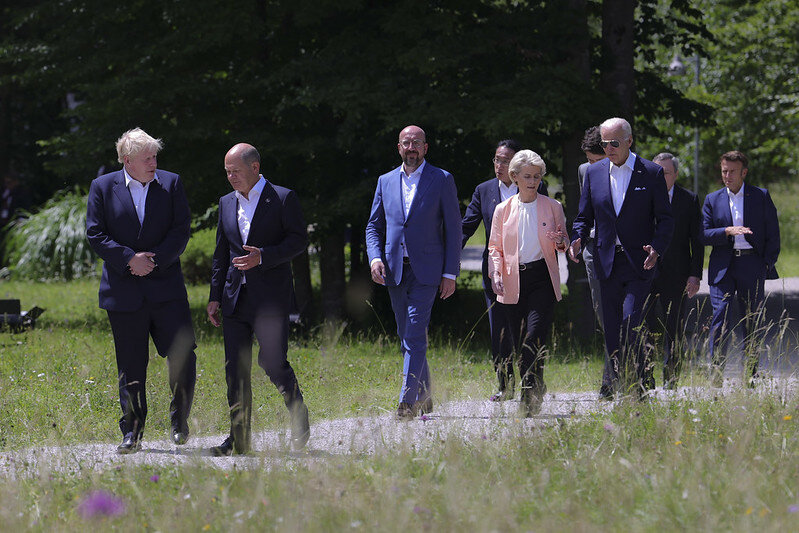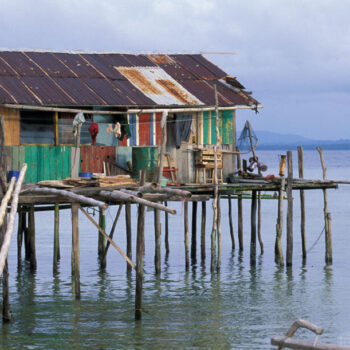At the G7 Leaders Summit in June, leaders agreed to “collectively mobilise up to $600 billion in public and private investments” for infrastructure between now and 2027.
The agreed Partnership for Global Infrastructure and Investment, or PGII, could be a turning point in developed countries’ efforts to fund the clean energy transition in the developing world. But it must be designed in such a way that capital can start to flow soon.
We have heard ambitious words from the G7 before. It agreed on a similarly named partnership a year ago, and last December added a promise that it would aim to scale up funding “from billions to trillions”. The latest collective pledge, of $600 billion over five years, ought to be deliverable, but the risk is that the initiative gets stuck in a protracted design process.
Instead, the following must happen:
- The PGII must serve as a complementary structure for current G7 efforts to offer emerging economies Just Energy Transition Partnerships. The first has been launched in South Africa and discussions are ongoing for India, Indonesia, Vietnam and Senegal – but so far there has been a perception of slow progress.
- To deliver for climate, the PGII needs to be framed as a positive development offer providing a strong partnership aligned with a Net Zero pathway that keeps 1.5°C within reach. All G7-supported investment should be net-zero aligned to avoid stranded assets. This is as necessary for investments like hospitals, digital connectivity and urban transport as for more obvious “climate” focused investment in clean energy. Giving the Partnership for Global Infrastructure and Investment a climate identity would not mean limiting its scope. But renewable energy is best suited to deliver a “proof of concept” for the initiative as part of a sequential approach where other sectors would be brought in over time.
- The rationale of the offer should be to drive a race to the top and give host countries the incentive to deliver more and better projects with higher public value. That means projects and investments that meet internationally recognised environmental, social and governance standards.
- US President Biden framed the PGII as a competitor to the Chinese Belt and Road initiative, but Chancellor Scholz was keen to avoid that narrative. These differences should not derail the initiative or lead to a protracted fight over its identity. Whether systems competition will be part of the motivation will not matter if the G7 follow an “open architecture” approach, and competition happens on principles and standards rather than excluding certain countries in an arbitrary manner.
- To make the total more than the sum of its parts, the G7 needs to develop a joint brand for the various domestic infrastructure initiatives. The fact that Leaders still used different names, including the EU Global Gateway and the British International investment initiative perpetuated an image of Western disunity. The US has come a long way by accepting the G7 Partnership for Global Infrastructure and Investment as an umbrella term, domestically and taking ownership of the $600 billion as a joint multilateral commitment. The others should now accept PGII as a joint umbrella branding.
- A complementary financing package is needed to show that the $600 billion is real. When Italy ran the G20, it commissioned a capital adequacy review of the Multilateral Development Banks, now being scrutinised. To get the billions, and eventually trillions, of private sector capital flowing, the G7 must go beyond that. It needs new mechanisms to reduce risk to the point where long-term institutional investors can go in with confidence.
- Regional warehouse facilities could be offered by MDBs to investors, to aggregate individual projects into larger risk pools. Guarantees have been shown to shepherd into projects much larger sums of ordinary equity and debt from other investors. However, there is much scope to scale up those guarantees.
- One option would be a regional guarantee platform for Asia, with three JET-P candidate countries India, Indonesia and Vietnam as the priority. If so, a programme involving a few participants, using existing Multilateral Development Bank structures and private reinsurance companies could be established quickly to credit-enhance clean energy project pipelines.
The need for a G7 initiative is clear. Cost-effective clean energy alternatives to hydrocarbons are available, but the level of investment – $64.3 billion in 2021 across non-OECD countries excluding China – requires a sevenfold increase by 2030 to put the world on a pathway to 1.5°C.


